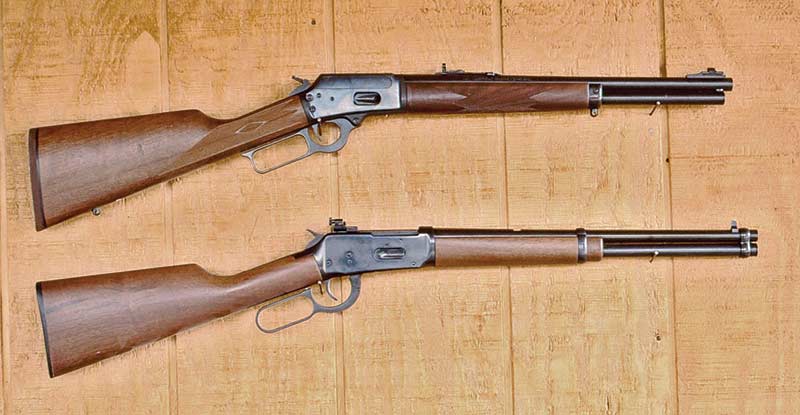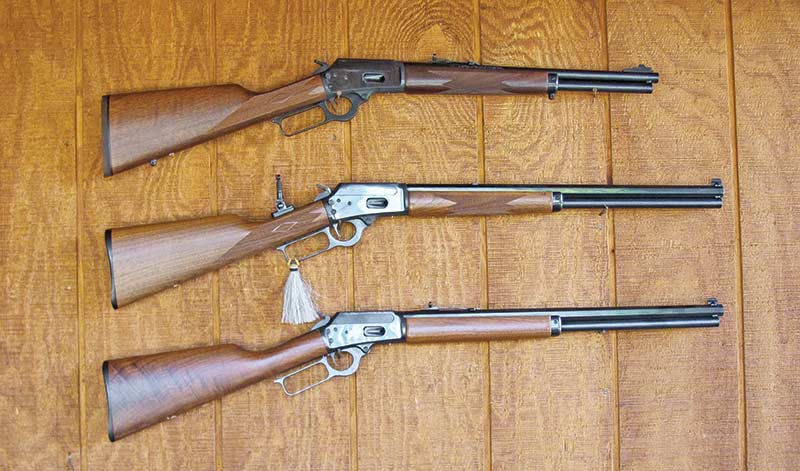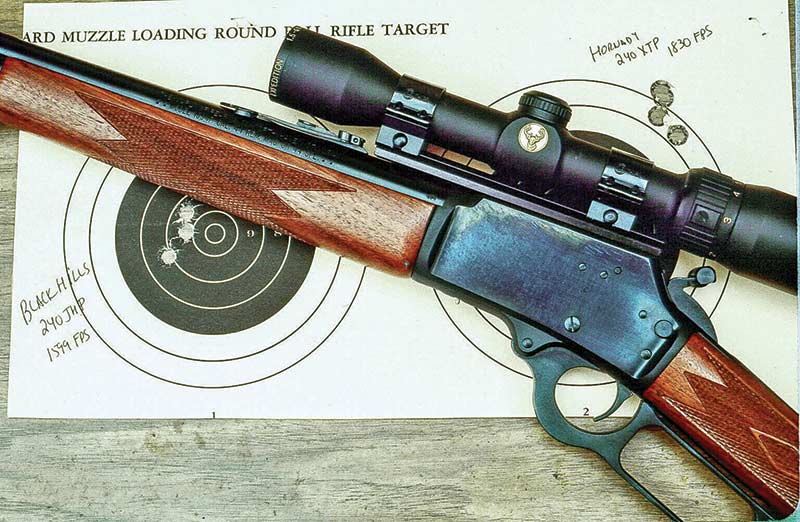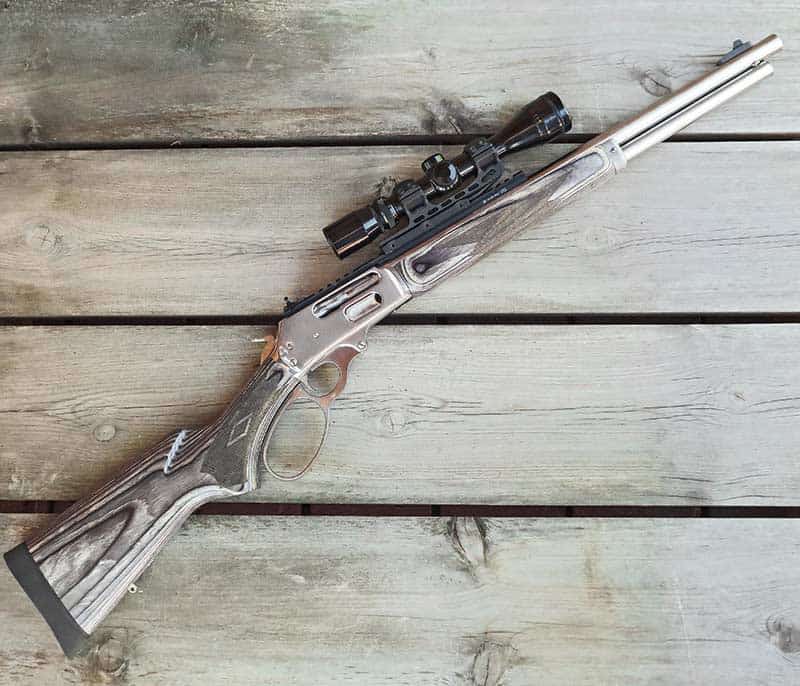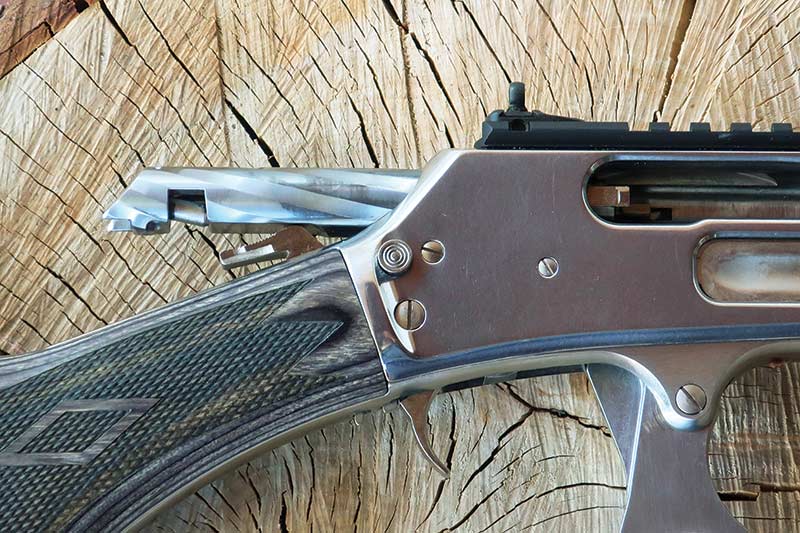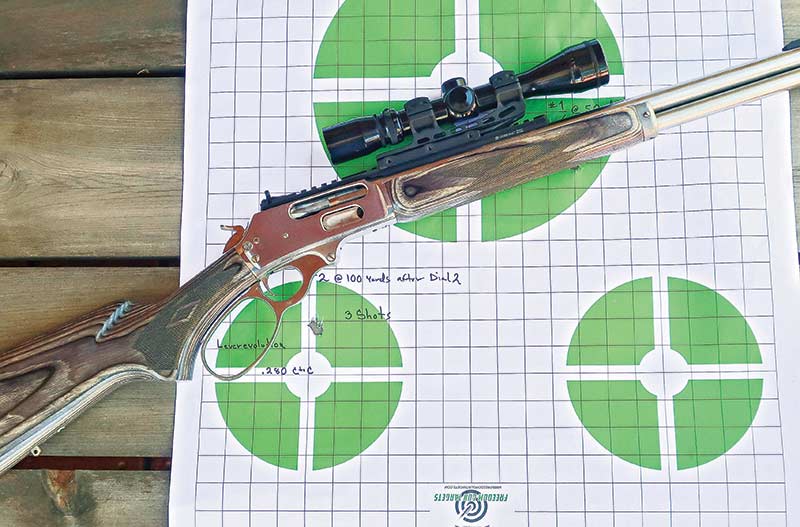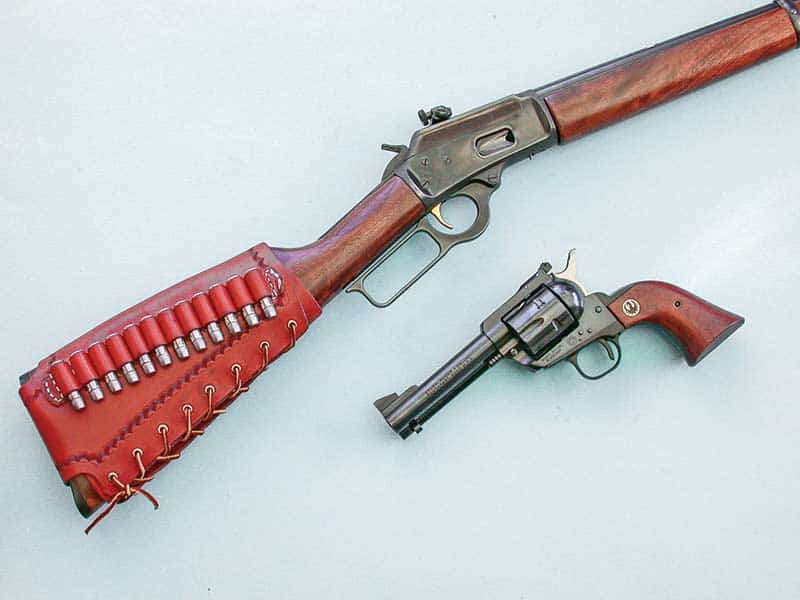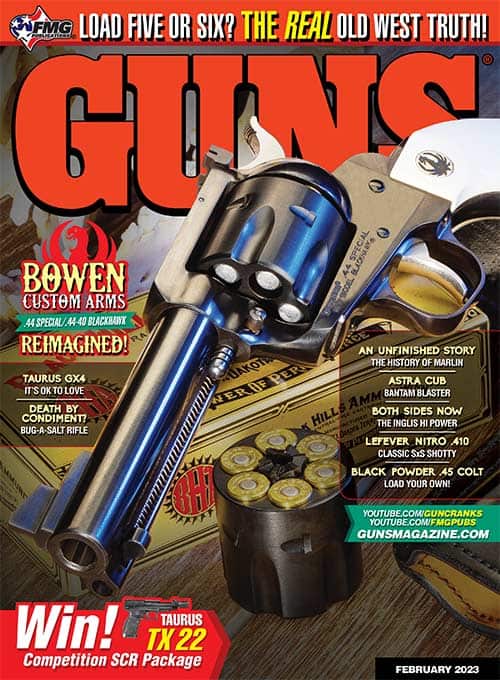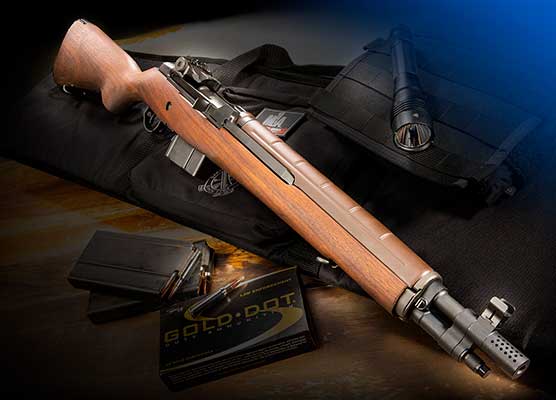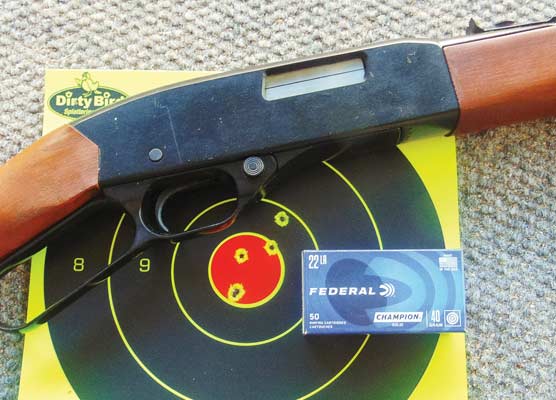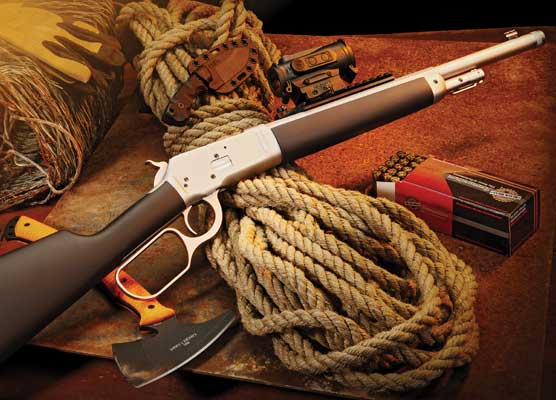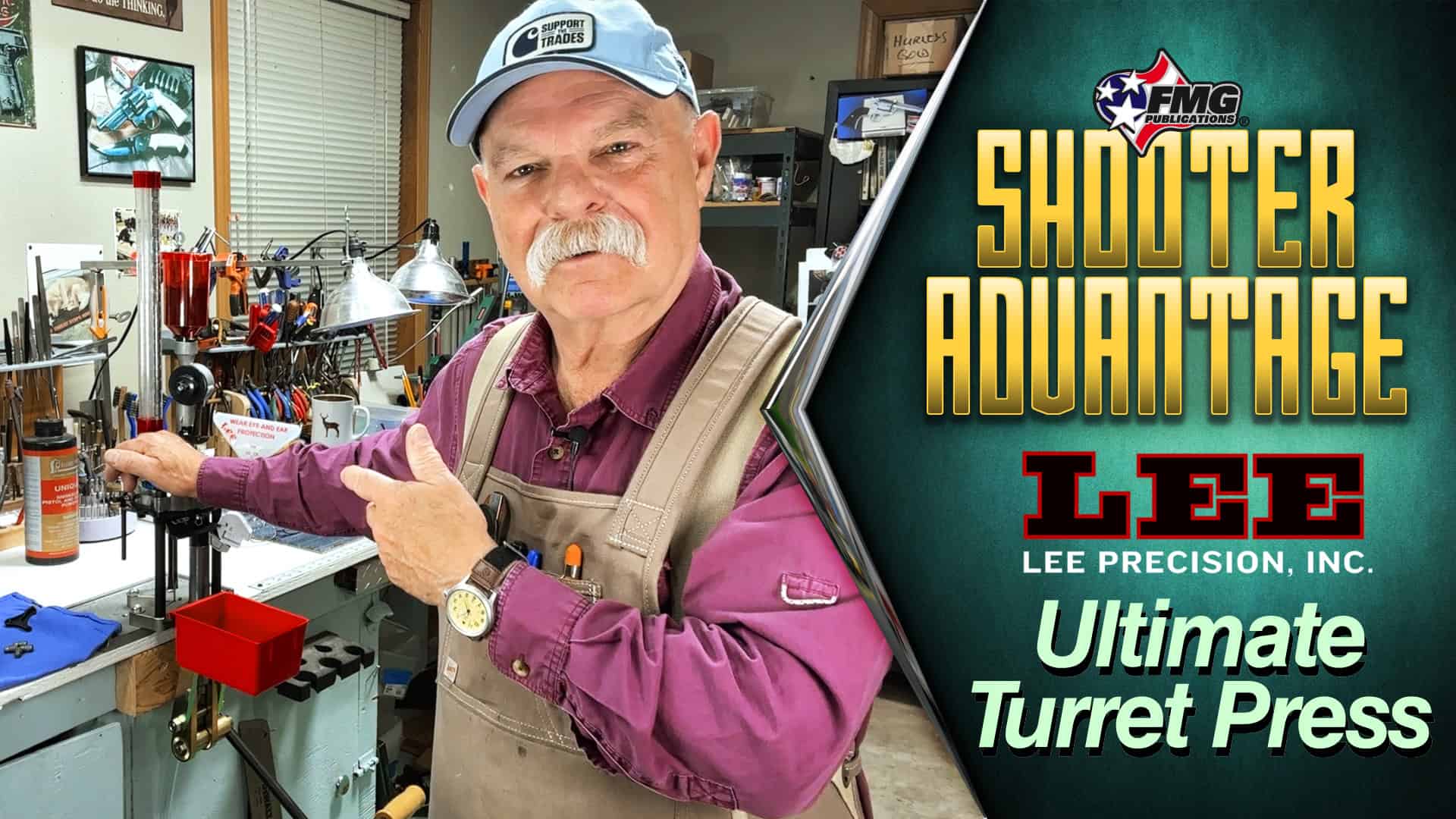Marlin Lever Guns
A History Of Firsts
Ask most shooters when the first .45-70 lever-action rifle appeared and they will say the 1886. Winchester had begun with the 1860 Henry .44 Rimfire then followed with the upgraded 1866 .44 Rimfire, which was then upgraded to the Model 1873 Winchester chambered in the new .44 Winchester Centerfire cartridge. This was followed in 1876 with a larger version chambered in more traditional rifle and cartridges such as the .45-60 and .45-75.
Marlin Genesis
The action of the Winchester Model 1876 would not handle the .45-70 so the next step in levergun evolution was not by Winchester but John Marlin, who had been producing revolvers. His first rifle, which would eventually be named the Model 1881, was chambered in .45 Government — more commonly known as the .45-70 — as well as the .40-60. So, Marlin produced a lever-action .45-70 five years before the Winchester Model 1886 appeared. This first Marlin repeating rifle loaded through a gate on the right side of the receiver, and ejected cartridges from the top. The barrel was octagon, 28″ in length with the magazine holding 10 cartridges.
Marlin followed up with the Model 1888 chambered in what now are referred to as pistol-length cartridges, namely .44-40, .38-40 and .32-20. These were available in both octagon and round barrel versions and in several barrel lengths. The conventional wisdom says Marlin was responsible for renaming the .44, .38 and .32 Winchester Centerfires so they wouldn’t have to place “Winchester” on their rifles.
One year later using the Hepburn patent, the Model 1889 Marlin appeared with the now familiar side-ejection of fired cartridges. This feature would become extremely important in the future for those who wanted to put a scope on their leverguns. The Model 1889 was made exceptionally handy by being offered in a 15″ barrel. This was the forerunner of today’s Trapper Versions, which are government mandated to have a barrel length no shorter than 16″.
In 1891, also using a Hepburn patent, the Marlin Safety Repeating Rifle Model 1891 was offered in .22 Long Rifle and was unique in the fact it could be had either as a side-loading or tube-loading version. The Model 1891 was a favorite of Annie Oakley for her marksmanship exhibitions. One year later the Model 1892 arrived — which also had a unique Marlin feature. In addition to being chambered in .22 Rimfire, it could also be used with either .32 Rimfire or .32 Centerfire cartridges by changing the firing pin.
In 1922, the model 1891 became the Model 39, followed by the Model 39A in 1939 and in 1953 the Model 39A Mountie appeared. This was my first-ever firearm purchased personally right after I graduated from high school in 1956. Now, nearly 70 years later, it still remains the .22 Rifle by which all others are judged. My original Mountie is still in use and my daughter fires anywhere from 500 to 1,000 .22 cartridges through it every week, weather permitting.
Hepburn was issued a new patent in 1893, which allowed the Model 1889 to be improved with a new locking bolt system and a two-piece firing pin. It also differed as it was chambered for traditional-length rifle cartridges, the .32-40 and .38-55. These were the first cartridges chambered in the soon-to-arrive Winchester Model 1894.
The Winchester was then chambered in 30 WCF, or .30-30 and in 1895 Marlin followed by chambering their model 1893 in the new smokeless .30-30. Marlin also offered the Model 1893 in a 15″ Trapper Version and, as with Winchester, also chambered in .32 Winchester Special.
One year later Marlin announced: “The Model 1894 is the latest and most improved repeating rifle to use the popular .32-20, .38-40 and .44-40 cartridges, and is the successor to our well-known model 1889. In the Model 1894 rifle, every desirable feature of the 1889 is retained and the improvements suggested by five more years of experience and experiments are added. This rifle is practically the Model 1893 adapted to the shorter cartridges.” In addition to the three cartridges mentioned, Marlin also chambered the Model 1894 in .25-20.
Competitive Confusion
Looking at the numbers assigned to lever-action rifles by Winchester and Marlin, it is very easy to be confused. Winchester’s short-cartridge model was the 1892 while Marlin went with the designation Model 1894 for the .44-40 length cartridges. Marlin was first with the .30-30 cartridges using the Model 1893 designation while Winchester used the Model 1894 title for the .30-30 length cartridges.
In 1936, the Model 1893 became the Model 1936 and was renamed the Model 36 in 1937. In 1948, the rectangular type bolt was replaced with a round bolt and this became the Model 336 for which Marlin claimed: “All Marlin 336 Rifles and Carbines are built with a new, rugged locking system that assures smooth functioning. In this sturdy locking mechanism the round breech bolt is completely encased in the area of the locking bolt by a solid bridge of steel in the receiver…. This massive locking bolt is firmly supported in the receiver and engages in the broad, deep locking surface of the breech bolt, furnishing a strong, safe breech for the .35 caliber cartridge and other cartridges for which the Marlin 336 rifles and carbines are made.”
The Model 336 has been a favorite of deer and black bear hunters for over 75 years and has one up on the Winchester 1894 as it was chambered not only in .30-30 but also the excellent .35 Remington. My first ever lever-action rifle shooting a traditional rifle-length cartridge was a Model 336 chambered in .30-30. However, it would take several decades before I could find a straight-gripped Model 336 for the .35 Remington. Both are grand cartridges but for black bear or elk up close, I would certainly go with the .35 Remington.
Changing Times
The modernization of the Marlin levergun chambered in pistol-length cartridges began with the Model 336 being chambered in .44 Magnum in 1963. Marlin said at the time: “NEW! MARLIN .44 MAGNUM — Hard-hitting new carbine combines smashing .44 Magnum power with dead center Micro-Groove accuracy! Tops for heavy-timber deer and bear hunting. Big capacity. Solid top receiver and side ejection for low-centered scope mounting. Light and fast, powerful and sure! Available June 1, 1963. $86.95. Specifications 20″ Micro-Groove barrel; 38 ½” overall length; approximately 7 lbs.; 10 power-packed shots.”
My Marlin .44 Magnum Model 336 was purchased in 1966. I had ordered a new Winchester 1894 in .44 Magnum. However, when I went to the gun shop to pick it up, I saw the Marlin. Finding it to be more nicely fitted and finished, as well as smoother in operation, I took it instead. I had read what I consider the most noteworthy words ever penned by a gun writer, in this case my friend the late John Lachuk. Speaking of the .44 Magnum Model 336 he basically said, “If I had my druthers, I would take this new Marlin and my .44 Magnum sixgun and head for the high country.” This sold me on the Marlin. I’ve never regretted choosing the Marlin .44 Magnum for the first of my many big bore leverguns.
The Marlin 1894 is one of the handiest and most dependable rifles ever offered. For my use, it was made even handier with the introduction of the 16″ barreled Trapper Model not only in .44 Magnum but .45 Colt as well. Unfortunately, these are quite rare and I believe only 500 of each were made. I must’ve been living particularly right the day I found both examples on the rack of a local gun store and did not hesitate to write a check for both of them.
Another rare version of the Model 1894 is chambered in .41 Magnum and I found mine on the used rack of another local gun shop. I picked it up to look at it thinking it was a .44 Magnum and when I saw the “.41 Magnum” marking, I immediately went for my checkbook. I have never seen another one offered for sale locally.
Top Shelf
Without a doubt, at least in my mind, the number one Marlin of all time when it comes to handiness and usefulness is the Model 1894CS, introduced in 1985 chambered in .357 Magnum. There is not much to be done with a lever-action rifle, at least in my area, that cannot be accomplished with a properly loaded .357 Magnum. With its 18 ½” barrel, it holds 10 rounds and my original .357 is now sided by two more so each one of my three grandsons will have their own — my son bought his own personal 1894CS.
Two other excellent offerings in the Model 1894 were added in 1988 with the addition of the .25-20 and .32-20 chamberings, then this was followed by a .44-40 Marlin. The first .44-40 version came with a heavy 24″ octagon barrel and when my wife chose it for her personal levergun, I calculated the necessary barrel length to hold 10 rounds the magazine tube. This turned out to be 19 ½” and trimming it back made it much easier for her to handle — and me too! She has used it successfully with both smokeless and black powder loads. Sadly, I don’t believe the Model 1894 has ever been offered in the modern version in .38-40.
Handiness is my top attribute for lever-action carbines, so it is hard for me to understand why the .32-20 and .25-20 were offered with a 22″ barrel and a half magazine. If I had been there originally, they both would’ve been equipped with 16″ barrels and full-length magazines. I talked to the powers-that-be at Marlin when the .32 Magnum cartridge first arrived and found they did not know a whole lot about it.
I asked for a 16″, lightweight .32 Magnum holding 10 rounds. What we got was a heavy octagon, longer-barreled version. It has turned out to be an excellent levergun but somewhat lacking in what handiness should be. After it was dropped from production, I called Marlin to see if they could find a second example and they did. It turned out to have exceptional wood and my original .32 Magnum Marlin was converted to .327 Magnum.

